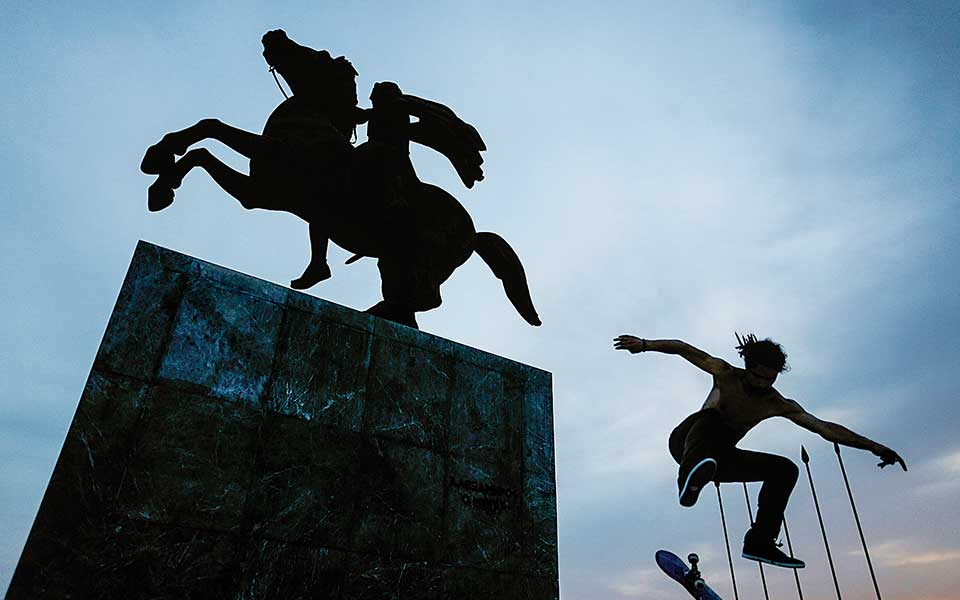Last summer, the hip magazine Monocle ran a digital feature on Thessaloniki’s revival. “Greece’s second city is defiantly bouncing back from the economic crisis and welcoming an increasingly international crowd,” it read. The Association of British Travel Agents, meanwhile, ranked the city among the 12 destinations “to watch for” in 2019, thanks to its new flight connections, its big public events and its value-for-money rating.
The “capital of the Balkans,” as it’s sometimes called, is evolving and claiming a starring role on the southern European stage. It moans sometimes (with good reason), but it’s optimistic that its chronic ailments will finally be healed, starting with the completion of the much-beleaguered metro – now expected in 2023, according to latest estimates.
“The day I scan my first ticket at the Thessaloniki metro will be the happiest day of my life,” says Mayor Konstantinos Zervas, a 55-year-old civil engineer with a postgraduate degree from Brown. He won last May’s local election after running as an independent, promising to modernize the city’s infrastructure and boost its quality of life with steps such as improving cleanliness and promoting respect for public spaces. He talks of rebranding the city as a hub of tourism, commerce, finance, culture and religion.
The truth is that there’s plenty to work with – sites, experiences and services – as first-time visitors are pleasantly surprised to discover. A crew from a France 2 television network travel program was recently in Thessaloniki for a story on its now famous New Waterfront, the biggest urban rejuvenation project to have been carried out in the city in several decades.
Over the course of their explorations, the French presenters discovered and were enchanted by the old quarter of Ano Poli, citing it as the best reason for anyone to visit Thessaloniki. Last winter, the London Times spent a long weekend in the city, recommending it to its readers not just for its cultural attractions, but also for its “upsurge in foodie outlets.”
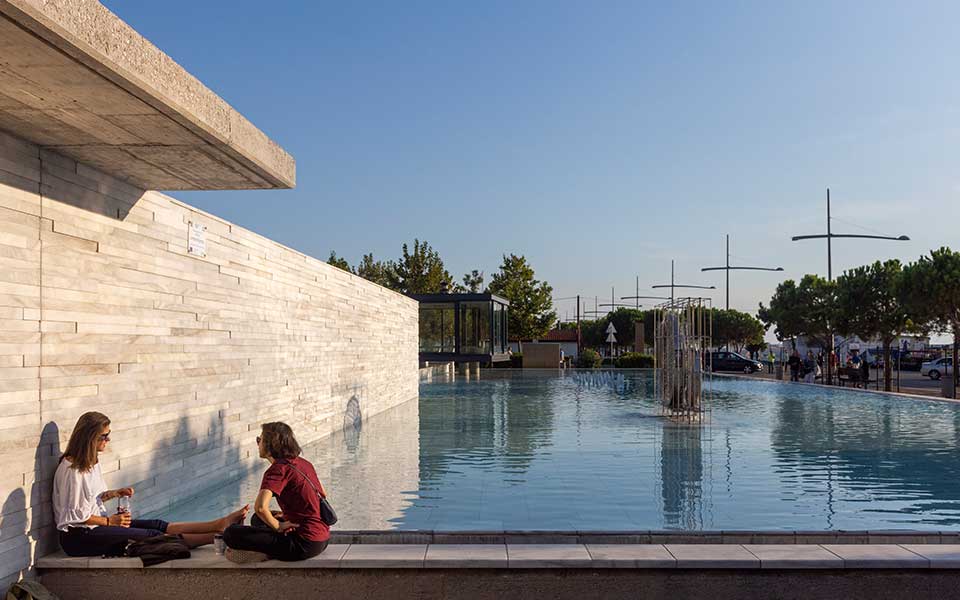
© Perikles Merakos
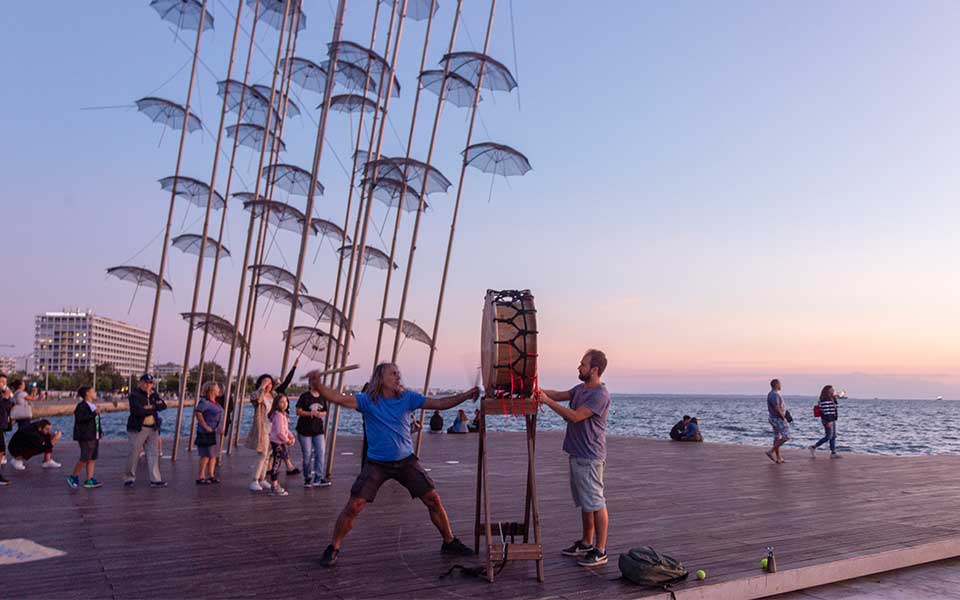
© Perikles Merakos
Love at the waterfront
“All roads lead to the sea,” was the title of yet another tribute to Thessaloniki, published last May by the Irish Times, which described the city as “a melting pot before the word was invented.” It quotes a local tour guide as saying that the waterfront “saved the sanity of the city during the crisis.”
According to customer surveys commissioned by the Thessaloniki Hotels Association, the waterfront is the city’s most popular destination right now. Unfortunately, many of its features, such as the water fountains, are not getting the TLC they need and look somewhat neglected as a result. Local business people, however, have stepped in with donations to help; one such person is Sani Resort’s Stavros Andreadis, who is providing funds for the maintenance of two of its pocket parks: the Sculpture Garden and the Mediterranean Garden.
The continuous five-kilometer stretch dedicated to pedestrians is, nevertheless, a sight to behold, especially early in the morning when it’s quiet. Throughout the day, you‘ll see people taking a stroll, having a run, cycling or just hanging out, enjoying the sea views. It also has several artistic features, most popular among which is the “Umbrellas” sculpture by George Zongolopoulos.
“I’ve never seen a sculpture have such an effect on people,” says architect Prodromos Nikiforidis from the Nikiforidis/Cuomo firm, which designed the waterfront’s facelift. Indeed, passersby invariably stop at the famous installation to take photographs, striking poses ranging from lighthearted – think Mary Poppins taking flight – to serious. It’s a compelling sight, much like a spontaneous outdoor performance. And the “actors” always leave with a smile on their faces.
From skaters doing ollies off the pedestal of the statue of Alexander the Great on horseback to families with children enjoying mini-cruises of the Thermaic Gulf, Thessaloniki’s residents and visitors get as much as they can out of the waterfront.
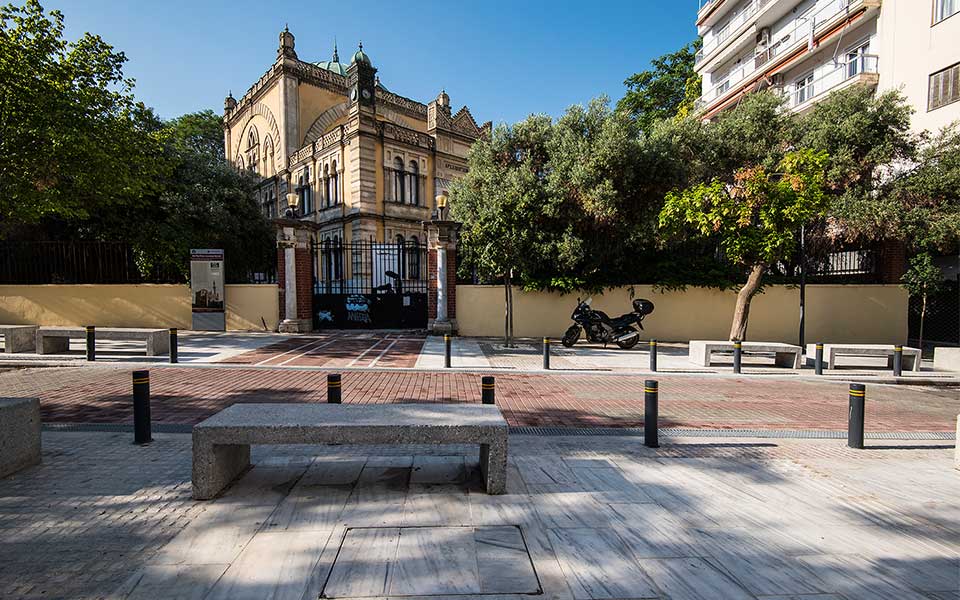
Innumerable reasons to visit
Thessaloniki experienced a remarkable rise in overnight stays at its hotels from 2012 to 2018, going from 1.6 to 2.4 million per year. Data for the first eight months of 2019, however, confirm that tourism can be an erratic market, with no room for complacency: overnight stays dropped marginally, even as international publications are singing the city’s praises as a city break destination.
The devaluation of the lira kept many Turks away; they come here in part to visit the Kemal Ataturk Museum, located in the house where the founder of modern Turkey was born. On the other hand, the commencement of flights to and from Qatar have helped open up the Gulf market, while efforts launched a few years ago to attract the world’s Jewish community are starting to bear fruit, with large numbers of Jewish visitors arriving from Israel and the US.
If you fly to Thessaloniki, you’re bound to notice the construction site for the new airport terminal, a 100-million-euro project being carried out by Fraport and slated for completion in 2021. Will this give tourism a fresh boost? The aim is to attract more carriers, connections and visitors. Apart from the new terminal, another important development expected to have a positive impact on tourism is the completion of the metro and its extension to the airport so as to facilitate the movement of travelers.
In the meantime, Thessaloniki is reaching out to dynamic new tourist markets. “The challenge is to attract visitors from more countries, to reach out beyond the Balkans to the rest of Europe as well. We need to reboot the city’s historical and cultural connection to Central Europe and attract the interest of northern Europe, too,” says Thanasis Dougias, director of the new boutique hotel The Modernist.
But it’s not just Europe. Last year, the city hosted its biggest-ever international tourism event, the International Meeting on Silk Road Tourism, organized by the United Nations’ World Tourism Organization and constituting a link to China (via most of the rest of Asia), which is seen as the next big source of tourists. The country of honor at this year’s Thessaloniki International Fair, Greece’s biggest commercial expo, was India, another massive market with enormous potential.
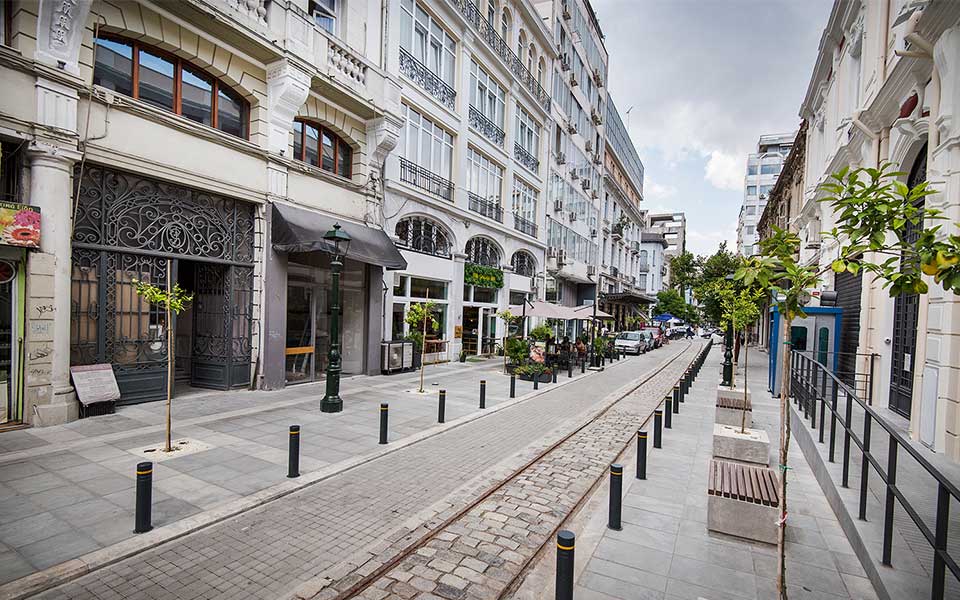
COMING SOON
There’s more good news on other fronts as well. What will be the biggest film studio in Greece is being built in eastern Thessaloniki, in cooperation with Bulgaria’s Nu Boyana, one of Europe’s largest film studios. A movie on the subject of the city’s Jews will start filming here this winter.
The historic Modiano Market is being given a radical facelift by the architectural firm Sparch, while the stretch between the Galerius Palace Complex and the waterfront is being pedestrianized and revamped. Once Fanarioton Square is finished, you’ll be able to enjoy a view from there stretching all the way to the sea.
With its long history and its modern landmarks, Thessaloniki offers much to explore for the inquisitive visitor. It‘s an attractive destination, with a vibrant and creative cultural scene and cool entertainment options, and there’s always something more to discover.

